
Île-à-Vache: A Hidden Gem in the Caribbean
Discover Île-à-Vache, Haiti's hidden gem with pristine beaches, lush landscapes, and rich cultural history. An untouched paradise perfect for nature lovers and cultural enthusiasts.
Île-à-Vache, or 'Cow Island,' is a small, serene island located off the southern coast of Haiti. This idyllic destination is known for its stunning beaches, clear turquoise waters, and lush greenery. The island remains largely untouched by commercial tourism, offering visitors an authentic Caribbean experience. Nature lovers will find Île-à-Vache to be a paradise. The island is home to diverse flora and fauna, including vibrant tropical birds and exotic plants. Hiking trails meander through dense forests, leading to breathtaking viewpoints and secluded beaches. The island's tranquility is perfect for those seeking to escape the hustle and bustle of modern life. Cultural enthusiasts will appreciate the island's rich history and local charm. Île-à-Vache is dotted with small villages where friendly locals welcome visitors with open arms. Traditional fishing practices are still in use, and you can often see fishermen bringing in their daily catch. The island also has historical sites, such as the ruins of an old French fort, adding a touch of historical intrigue. Whether you're looking to relax on pristine beaches, explore lush landscapes, or immerse yourself in local culture, Île-à-Vache offers a unique and enriching experience that is sure to create lasting memories.
Local tips in Île-à-Vache
- Bring cash as there are no ATMs on the island, and many places do not accept credit cards.
- Consider hiring a local guide to explore the island's hidden trails and historical sites.
- Pack insect repellent to protect yourself from mosquitoes, especially during the rainy season.
- Try the local seafood; it's fresh and often caught the same day.
- Respect local customs and traditions. The island's community is close-knit and values their privacy and culture.
When is the best time to go to Île-à-Vache?
Unmissable attractions to see
Fort Jacques et Fort Alexandre
Discover the historic Fort Jacques et Fort Alexandre, where history, breathtaking views, and natural beauty converge in the heart of Haiti.

Carrefour Desruisseaux
Experience the tranquility and natural beauty of Carrefour Desruisseaux, a serene park in the heart of Miragoâne, Haiti, perfect for relaxation and exploration.

Saut-Mathurine
Discover the breathtaking beauty of Saut-Mathurine, Haiti's stunning waterfall surrounded by lush landscapes and vibrant wildlife.

Abaka Bay and Resort
Experience luxury and adventure at Abaka Bay and Resort in La Hafte, Haiti, where stunning beaches meet serene landscapes for an unforgettable getaway.
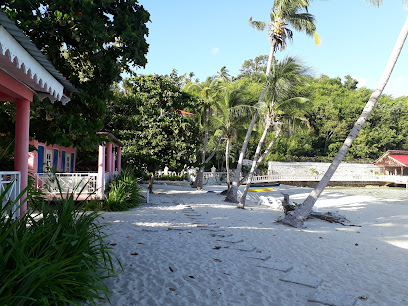
Cathedral of Saint Louis Roi of France
Explore the breathtaking beauty and rich history of the Cathedral of Saint Louis Roi of France in Jérémie, a treasure of Haitian architecture.
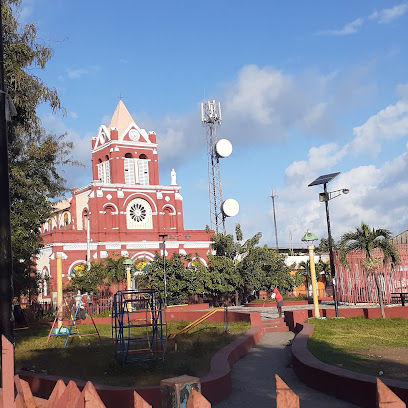
Ile a Vache
Discover the tranquil charm and natural beauty of Ile a Vache, a hidden island gem off the southern coast of Haiti, perfect for an unforgettable getaway.

Cave Grotte Marie-Jeanne
Discover the breathtaking beauty of Grotte Marie-Jeanne, a captivating cave system in Port-a-Piment, showcasing stunning geological formations and rich biodiversity.

Cascade Touyac
Discover the enchanting beauty of Cascade Touyac, a tropical paradise with stunning waterfalls and lush landscapes in Port Salut, Haiti.
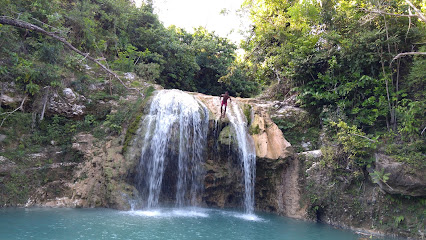
Gelée Beach
Discover the serene beauty and cultural richness of Gelée Beach, a hidden gem in Haiti perfect for relaxation and exploration.
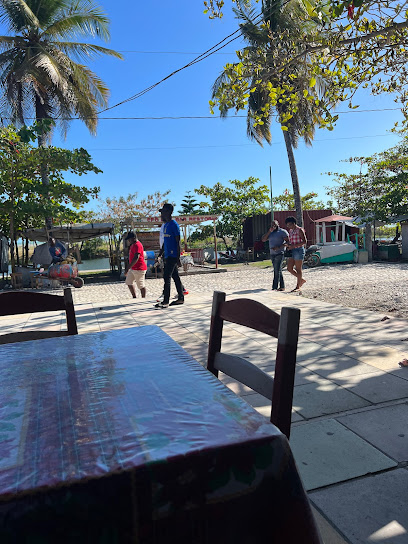
Pic Macaya
Experience the breathtaking beauty and adventure of Pic Macaya, a majestic mountain peak in Haiti, perfect for hiking and nature exploration.
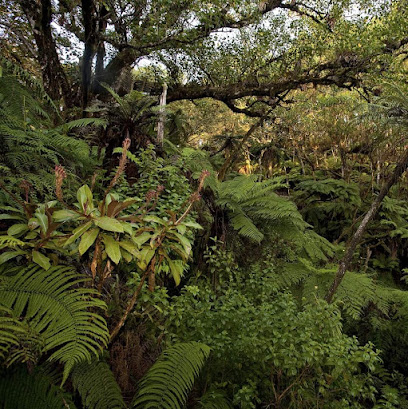
Kokoye Beach
Discover the stunning beauty and vibrant culture of Kokoye Beach in Petit Goave, a perfect getaway for relaxation and adventure.

Pic Macaya National Park
Explore the breathtaking landscapes and rich biodiversity of Pic Macaya National Park, a hidden gem in Haiti perfect for nature lovers and adventurers.
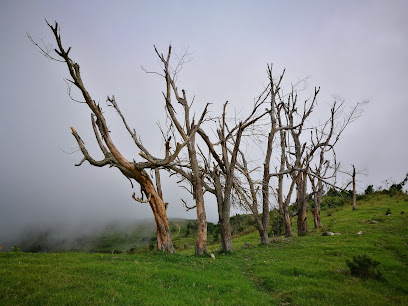
Grann Do Beach
Experience the tranquil beauty of Grann Do Beach in Haiti, a perfect getaway for sunbathers and nature lovers seeking peace and stunning views.
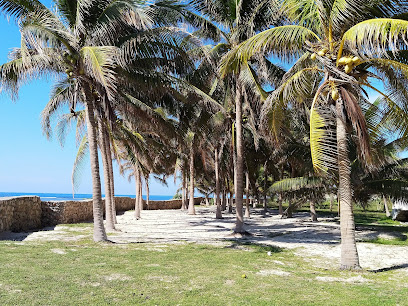
Adrenaline Beach
Discover the exhilarating beauty of Adrenaline Beach in Labadie, Haiti – a paradise for adventure seekers and relaxation enthusiasts.

Floye Beach
Discover the tranquil beauty of Floye Beach in Haiti, where soft sands meet crystal-clear waters for a perfect getaway.

Essential places to dine
Evline Bar Restaurant
Experience authentic Haitian cuisine at Evline Bar Restaurant on Ile a Vache – where local flavors meet stunning views.

La Foi Divine Bar et La Volonté de Dieu Multi-Services
Experience authentic Haitian hospitality at La Foi Divine Bar et La Volonté de Dieu on Ile a Vache – where relaxation meets local culture.

La Kay du Pecheur
Experience authentic Haitian cuisine at La Kay du Pecheur, where fresh seafood meets stunning Caribbean views on Ile à Vache.

Restaurants
Experience authentic Haitian cuisine in Cacor's vibrant restaurant scene—where every dish tells a story.

Johnny bar restaurant Avenue des jeune
Discover authentic Haitian cuisine at Johnny Bar Restaurant in Cacor - where every meal is a celebration of flavor and culture.

Johnny bar restaurant
Experience the rich flavors of Haitian cuisine at Johnny Bar Restaurant in Ilavache - a true culinary treasure.

Markets, malls and hidden boutiques
Dépôt de Vernet
Explore unique treasures at Dépôt de Vernet, the charming consignment shop in Les Cayes, Haiti, offering vintage finds and local culture.

Pas à Pas
Experience the charm of Pas à Pas, a local hardware store in Les Cayes, where craftsmanship meets community spirit.

Dada Shop
Explore the vibrant Dada Shop in Les Cayes, Haiti for a taste of local culture and authentic Haitian groceries.
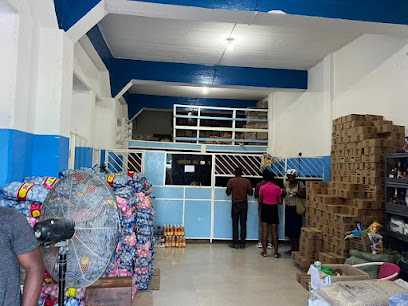
CHANT-U Store & More
Explore CHANT-U Store & More in Les Cayes for unique fashion accessories that embody the spirit of Haitian craftsmanship and culture.

Source - International Marketplace
Explore vibrant local culture at Source - International Marketplace, a boutique in Les Cayes offering unique artisan goods and authentic Haitian experiences.

Marché Île-à-vache
Experience the lively culture and flavors at Marché Île-à-vache, a must-visit shopping destination in the heart of Haiti's tropical paradise.

Doune Store
Explore Doune Store in Les Cayes for unique clothing and local fashion that captures the vibrant spirit of Haiti.

Pedro Bric a Brac
Discover the authentic flavors of Haiti at Pedro Bric a Brac, a charming tobacco shop in Les Cayes, where culture and craftsmanship unite.

Atelye Gran Sem
Discover unique handmade crafts and immerse yourself in Haitian culture at Atelye Gran Sem in Les Cayes.

Abie Store
Explore Abie Store in Les Cayes for unique Haitian fashion and vibrant local designs, perfect for souvenirs and stylish attire.

Bazile trading company
Explore the essence of Île à Vache at Bazile Trading Company, where local oils and craftsmanship meet enchanting island beauty.

BRIOnline store
Explore the vibrant clothing selection at BRIOnline Store in Les Cayes, where fashion meets local culture and creativity.

Madame Jerson Boutique
Explore the vibrant artistry of Haiti at Madame Jerson Boutique, where unique handmade treasures await every traveler.

Line shop
Experience exceptional beauty services at Line Shop in Les Cayes, where style meets relaxation in a charming atmosphere.
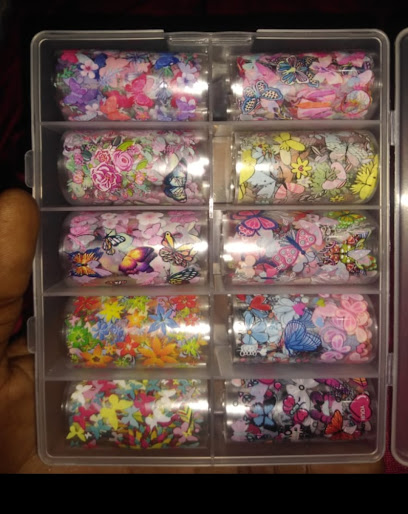
Lalou Store
Explore stylish apparel and unique accessories at Lalou Store in Les Cayes, a vibrant clothing store showcasing local and international fashion.

Essential bars & hidden hideouts
Rendez-vous Bar an Grill
Experience the vibrant culinary scene at Rendez-vous Bar an Grill in Les Cayes, where local flavors and friendly vibes await every visitor.
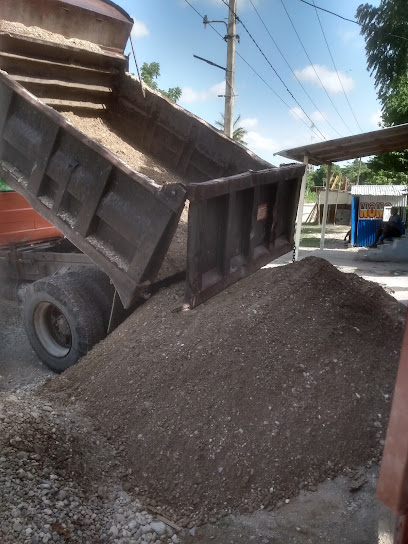
Chez Ruthe
Experience the authentic flavors of Haiti at Chez Ruthe, a culinary treasure on Île à Vache with a charming atmosphere and local music.

Evline Bar Restaurant
Experience the flavors of Haiti at Evline Bar Restaurant in Ile a Vache, where local cuisine meets breathtaking views in a vibrant atmosphere.

Ti kwen pam bar and grill
Discover the authentic taste of Haiti at Ti Kwen Pam Bar and Grill in Les Cayes, where local flavors meet vibrant atmosphere.
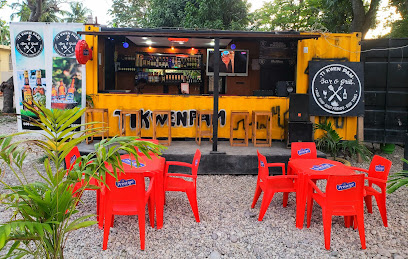
La Foi Divine Bar et La Volonté de Dieu Multi-Services
Discover the vibrant nightlife of Île à Vache at La Foi Divine Bar et La Volonté de Dieu, a perfect blend of local culture and Caribbean charm.

Relax Bar
Discover the vibrant atmosphere of Relax Bar in Torbeck, Haiti, where local culture, refreshing drinks, and friendly faces await you.

La Kay du Pecheur
Savor the authentic tastes of the Caribbean at La Kay du Pecheur, a must-visit restaurant in Cacor, where fresh seafood meets warm hospitality.

Happy Place Bar Resto
Experience the vibrant culture and flavors of Haiti at Happy Place Bar Resto, a lively bar offering exquisite drinks and local cuisine.

Ayizan Bar
Discover the vibrant nightlife of Les Cayes at Ayizan Bar, where local flavors and a lively atmosphere await you.

Bois moi
Discover the vibrant atmosphere of Bois Moi, a hidden bar in Les Cayes where local flavors and Caribbean nightlife come alive.

Restaurants
Experience the authentic flavors of Haitian cuisine at Cacor, a charming restaurant on Ile-à-Vache offering a delightful culinary journey.

Alfa drinks and more
Experience the vibrant nightlife of Les Cayes at Alfa Drinks and More, a bar where local culture meets refreshing drinks in a lively atmosphere.

GRAÇE DIVINE BAR-RESTO
Experience the authentic flavors of Haiti at Graçe Divine Bar-Resto in Cacor, where local cuisine meets vibrant culture in a welcoming atmosphere.

Classic Hookah
Discover the lively ambiance and cultural vibes at Classic Hookah, the premier bar in Les Cayes for tourists seeking an unforgettable experience.

Hot-shot
Discover the vibrant flavors of Haiti at Hot-shot Restaurant in Cacor, where every dish tells a story and every meal is a celebration.

Local Phrases about Île-à-Vache
-
- HelloBonjou
[Bon-jou] - GoodbyeOrevwa
[O-rev-wa] - YesWi
[Wi] - NoNon
[Non] - Please/You're welcomeTanpri
[Tan-pri] - Thank youMèsi
[Mey-see] - Excuse me/SorryEskize mwen
[Es-kee-zay mwen] - How are you?Kijan ou ye?
[Kee-jan ou ye] - Fine. And you?Byen. E ou?
[Byen. E ou] - Do you speak English?Èske ou pale angle?
[Es-ke ou pal angle] - I don't understandMwen pa konprann
[Mwen pa kon-pran]
- HelloBonjou
-
- I'd like to see the menu, pleaseMwen ta renmen we meni a, tanpri
[Mwen ta ren-men weh men-i a, tan-pri] - I don't eat meatMwen pa manje vyann
[Mwen pa manj vyann] - Cheers!Sante!
[San-te] - I would like to pay, pleaseMwen ta renmen peye, tanpri
[Mwen ta ren-men pe-ye, tan-pri]
- I'd like to see the menu, pleaseMwen ta renmen we meni a, tanpri
-
- Help!Èd mwen!
[Ed mwen] - Go away!Ale!
[Al-eh] - Call the Police!Rele Polis la!
[Re-le Po-lis la] - Call a doctor!Rele yon doktè!
[Re-le yon dok-te] - I'm lostMwen pèdi
[Mwen pe-di] - I'm illMwen malad
[Mwen ma-lad]
- Help!Èd mwen!
-
- I'd like to buy...Mwen ta renmen achte...
[Mwen ta ren-men ach-te] - I'm just lookingMwen jis gade
[Mwen jis gad] - How much is it?Konbyen sa ye?
[Kon-byen sa ye] - That's too expensiveSe twò chè
[Se twò che] - Can you lower the price?Eske ou ka bese pri a?
[Es-ke ou ka be-se pri a]
- I'd like to buy...Mwen ta renmen achte...
-
- What time is it?Kisa lè sa ye?
[Kee-sa le sa ye] - It's one o'clockLi fè yon èd
[Li fe yon ed] - Half past (10)Demi pase (10)
[De-mi pa-se (10)] - MorningMati
[Ma-ti] - AfternoonApremidi
[Ap-re-mi-di] - EveningAswè
[As-we] - YesterdayYe
[Ye] - TodayJodi a
[Jo-di a] - TomorrowDemenn
[De-men] - 11
[1] - 22
[2] - 33
[3] - 44
[4] - 55
[5] - 66
[6] - 77
[7] - 88
[8] - 99
[9] - 1010
[10]
- What time is it?Kisa lè sa ye?
-
- Where's a/the...?Ki kote yon/la...
[Ki ko-te yon/la] - What's the address?Kisa adrès la ye?
[Kee-sa ad-res la ye] - Can you show me (on the map)?Eske ou ka montre mwen (sou kat la)?
[Es-ke ou ka mon-tre mwen (sou kat la)] - When's the next (bus)?Ki lè pwochen (bis la)?
[Ki le pwoshen (bis la)] - A ticket (to ....)Yon tikè (pou ....)
[Yon ti-ke (pou)]
- Where's a/the...?Ki kote yon/la...
History of Île-à-Vache
-
Île-à-Vache, located off the southern coast of Haiti, was first charted by Spanish explorers in the 16th century. Its name, which translates to 'Cow Island,' likely derives from the cattle that were introduced to the island by early European settlers. The island's natural harbors made it a strategic point for ships navigating the Caribbean Sea.
-
During the 17th century, Île-à-Vache became a notorious pirate haven. Infamous buccaneers like Henry Morgan used the island as a base for their raids on Spanish treasure ships. The island's remote location and hidden coves provided perfect hideouts for these seafarers, making it a key player in the Golden Age of Piracy.
-
In the mid-19th century, Île-à-Vache was the site of a utopian experiment led by African American abolitionist, James Redpath. He established a colony for freed African Americans who sought to escape the racial tensions in the United States. Despite initial enthusiasm, the colony faced numerous challenges, including inadequate resources and poor planning, ultimately leading to its abandonment.
-
During the American Civil War, Île-à-Vache was briefly considered as a relocation site for freed slaves. The Haitian government, under President Geffrard, offered the island to the United States as a potential location for resettling freedmen. However, the plan never materialized due to logistical and political challenges.
-
Today, Île-à-Vache is known for its pristine beaches, lush landscapes, and vibrant local culture. The island is home to a small but close-knit community that relies on fishing, agriculture, and tourism. Visitors can explore the island's historical sites, enjoy water sports, and immerse themselves in the island's rich cultural heritage.
Île-à-Vache Essentials
-
Île-à-Vache is located off the southern coast of Haiti, near the town of Les Cayes. The nearest international airport is Toussaint Louverture International Airport in Port-au-Prince, approximately 200 kilometers away. From Port-au-Prince, you can take a domestic flight to Antoine-Simon Airport in Les Cayes. From Les Cayes, a boat ride of around 45 minutes will take you to Île-à-Vache. Boat services can be arranged through local hotels or tour operators.
-
Île-à-Vache is a small island, and the primary modes of transportation are walking, bicycles, and motorbikes. There are no cars on the island, which adds to its charm and tranquility. To explore the island, consider hiring a local guide or renting a bicycle from your accommodation. Boats are available for trips to nearby islands and for fishing excursions.
-
The official currency in Haiti is the Haitian Gourde (HTG). Some establishments may accept US dollars, but it's advisable to carry local currency for smaller transactions. Credit cards are rarely accepted on Île-à-Vache, so it's essential to have enough cash on hand. ATMs are not available on the island, so withdraw sufficient cash in Les Cayes or Port-au-Prince before traveling.
-
Île-à-Vache is generally considered safe for tourists, with a low crime rate compared to other parts of Haiti. However, standard safety precautions should still be taken. Avoid walking alone at night and keep your belongings secure. While the island itself does not have high-crime areas, it's always good practice to remain vigilant and aware of your surroundings.
-
In case of emergency, dial 114 for police or 116 for medical emergencies. There is a small medical clinic on the island for minor health issues, but for serious medical emergencies, you will need to go to Les Cayes. It is highly recommended to have travel insurance that covers medical emergencies. Always carry a basic first-aid kit and any necessary medications.
-
Fashion: Do dress modestly, especially when visiting local villages. Avoid wearing overly revealing clothing. Religion: Do respect local customs and traditions. If invited to a religious ceremony, dress appropriately and behave respectfully. Public Transport: Do be courteous to your fellow passengers. Boats and motorbikes are common modes of transport. Greetings: Do greet people with a friendly 'Bonjour' or 'Bonsoir'. A handshake is a common greeting. Eating & Drinking: Do try local cuisine and accept hospitality graciously. Don't refuse food or drink offered by locals, as it can be considered impolite.
-
To experience Île-à-Vache like a local, visit the local markets and interact with the island's residents. Participate in community events and festivals to gain insight into the local culture. Try traditional dishes such as 'Lambi' (conch) and 'Fritay' (fried street food). Explore the island's natural beauty by hiking to hidden beaches and coves. Engaging with local guides can provide a deeper understanding of the island's history and way of life.
Nearby Cities to Île-à-Vache
-
Things To Do in Jérémie
-
Things To Do in Jacmel
-
Things To Do in Petionville
-
Things To Do in Port-au-Prince
-
Things To Do in Saint-Marc
-
Things To Do in Gonaïves
-
Things To Do in Hinche
-
Things To Do in Cap-Haïtien
-
Things To Do in Port Antonio
-
Things To Do in Jarabacoa
-
Things To Do in Portmore
-
Things To Do in Puerto Plata
-
Things To Do in Ocho Rios
-
Things To Do in Runaway Bay
-
Things To Do in Santo Domingo



